How long do cockroaches live?
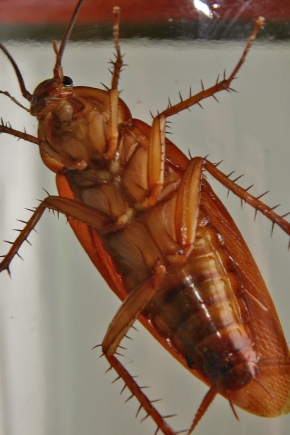
Cockroaches in the house are not welcome guests. In order to effectively fight them, you need to know what the life cycle of different types of domestic cockroaches is, how long they can live without water and food, and whether it is true or myth that an insect can live for some time even without a head ...
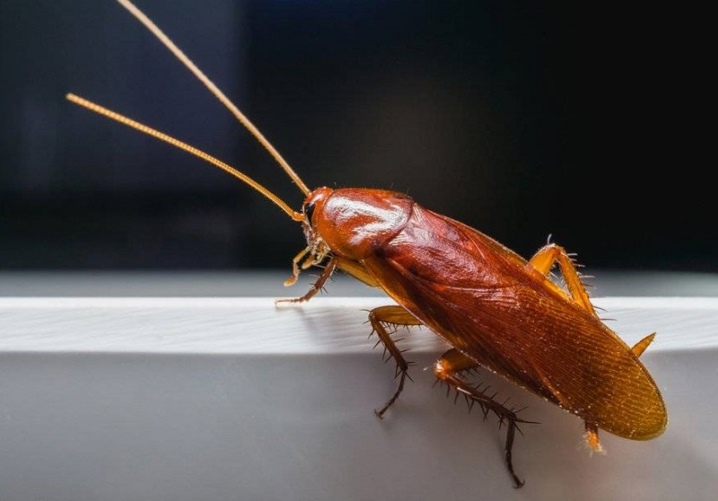
Life span
At the moment, there are about 4600 species of cockroaches in nature. But today we will consider only those who live in houses next to a person. Here they are:
-
red (Prusak);
-
black;
-
furniture;
-
American.
Let's get acquainted with the life cycle of each species in more detail.
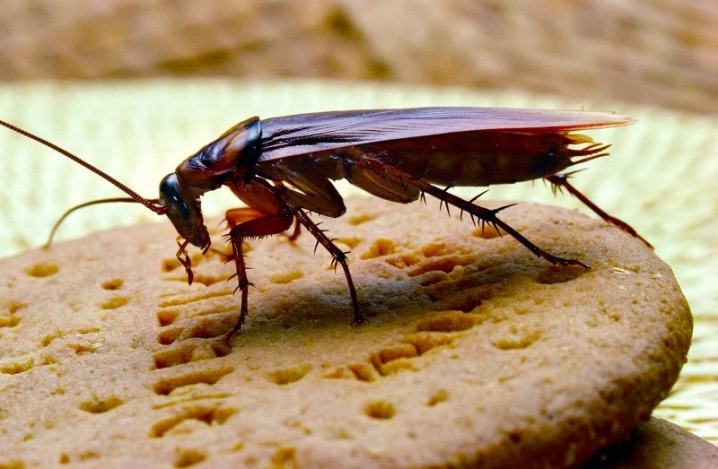
Red cockroach
In Russia, it is the Prusak that is found most often. Its development cycle is incomplete:
-
when a cockroach hatches from an egg, it has a very small size (up to 3 mm) and white color - it is called a nymph;
-
over time, the chitinous cover begins to darken;
-
after 60-90 days (but sometimes more, it depends on the living conditions), the insect reaches the adult stage and becomes an adult;
-
after that, the red cockroach is able to live for about 9 more months, and in general its life cycle is 1 year.

The Prussians are always in search of food, therefore, to combat them, it is most effective to use preparations in the form of a gel. In addition to housewives, this opinion is also shared by professional processors, which further confirms this fact. The most popular are gels that can retain their attractiveness for a long time. For example, the Hector brand gel, in addition to the combined bait, is capable of not drying for two months. During this time, all the insects in your apartment are guaranteed to have time to taste the delicacy that is deadly for them.

Black (oriental) cockroach
This variety is characterized by a glossy sheen of the shell, the color varies from red-brown to resinous black. Individuals of the male sex grow up to 2.5 cm in length, ¾ of the body are hidden under the wings, and its last segments extend beyond them. The females are larger - their body reaches 3.2 cm in length, the wings are absent, and the elytra are shortened, covering only a couple of segments of the body.
Black cockroaches are incapable of flying and jumping, in general, they crawl only on the floor, but not on walls and other vertical surfaces.
The natural habitat of this subspecies is the street, and not at all a human dwelling. Black cockroaches nest under fallen leaves, stones, planks and logs.
However, sometimes they enter houses and settle there, preferring cracks behind the baseboards, cracks in the sewer pipes.
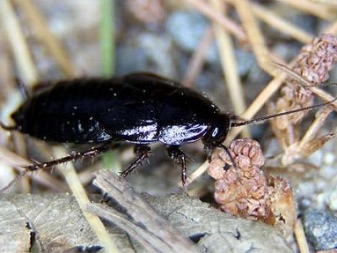

The development cycle, like that of the red-haired fellow, is shortened and consists of the following stages:
-
the female lays a fertilized ooteca (a chamber where 8-20 eggs are stored and developed), from which larvae appear after a month and a half;
-
after 10 molts, the larva becomes a full-fledged insect, but the exact period of maturation cannot be called - it completely depends on the ambient temperature (in the regions where it is warm, or in the summer months, this period can be 200 days, but in cold conditions - all 800);
-
in the adult stage, the black cockroach is able to live for about 6 months more.

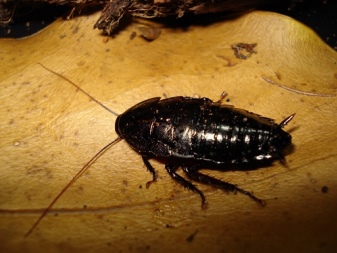
American cockroach
This subspecies is the largest of those considered - the length of its body reaches 5 cm. Its color is reddish-red, the contour of the front back is indicated by a yellow stripe. The "American" runs very fast, can jump and fly over short distances (for example, jump off the closet and fly to the table).
The insect's habitat is the street and human dwelling. Natural places of deployment - fallen leaves, trees, flower beds. In urban settings, "Americans" prefer showers, basements and attics, as well as bathrooms and kitchens.
Development cycle:
-
as in the previous variety, a female individual lays a capsule with eggs in which the larvae develop - under favorable conditions, they will be born after 25-35 days;
-
before reaching the stage of the imago, the nymph must transfer from 10 to 13 molts, in the last of which she acquires wings and the ability to reproduce;
-
the path from the larva to the imago, the individual passes in 180 days; in the adult state, the cockroach is able to live for about 1 more year.
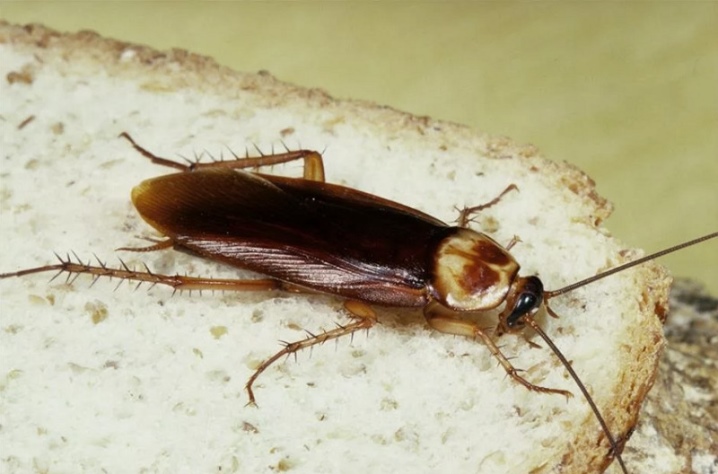
Furniture cockroach
And, finally, the last representative of the squad of cockroaches, which we want to tell you about, is a furniture cockroach, he is also a brown-striped cockroach. This insect is quite compact in size (the length of its body is 1.1-1.4 cm) with transparent wings protruding beyond the edge of the body in males and covering it by 2/3 in females. This subspecies is also capable of jumping and flying over short distances.
The furniture cockroach lives mainly in hot and dry climates. He loves premises that are well heated - children's institutions, hospitals.
Development cycle:
-
embryonic development in an egg takes 49 days;
-
the larva reaches the adult stage in 90-270 days (the period depends on the ambient temperature - the higher it is, the shorter the period);
-
an adult lives about 3-4 months more, under favorable conditions - 10 months.
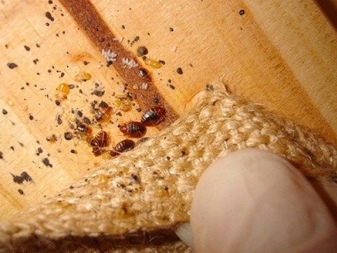
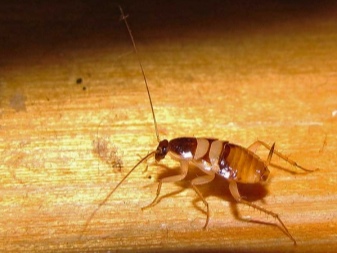
For a successful fight against cockroaches, it is necessary to understand what these mustachioed parasites are looking for in human homes.
-
Of course, food is in the first place: bread crumbs, fruits, vegetables, residues of sweet foods, dried oil stains, wallpaper glue - all this goes into the business of cockroaches.
-
An insect cannot do without water, but in the apartment it is - these are droplets at the bottom of the sink, bathtub, and water in the toilet, and condensation, and the remains of tea and coffee. It is even known that cockroaches, in search of liquid, can crawl onto a person and look for saliva on his lips. Most often they choose children for these purposes.
-
A person's house is always warm - this is also very important for insects. The cold is destructive for them.
-
The living space always hides many secluded places: here and the cracks behind the baseboards, and household appliances, and furniture. Since cockroaches prefer to "hunt" at night, they can hide from your eyes in one of them for months.
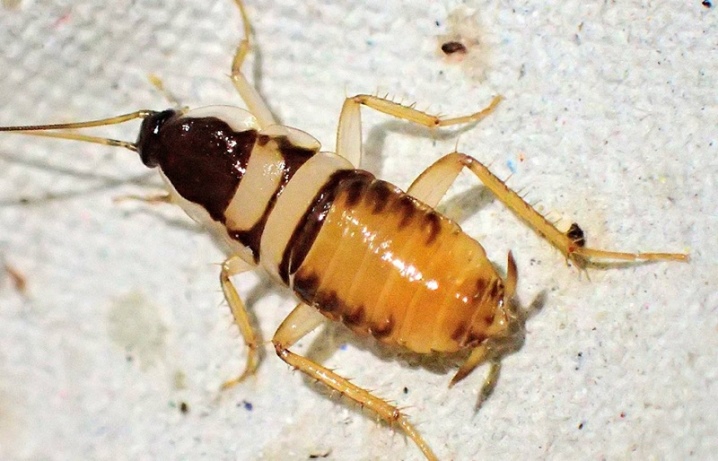
How long can they live without food and water?
Cockroaches are rightfully considered one of the most hardy insects, capable of getting used to almost any environmental conditions (except, perhaps, lowering the temperature to a minus mark). But can they live without food and water, and if so, how long? Let's figure it out.
Due to the slowed down metabolism (20 times lower than the human), cockroaches are able to live for quite a long time, eating nothing at all. For example, a Prusak can starve for about 40 days, and his black "brother" - all 70.
However, do not rush to rejoice if you think that you just need to clean the house more often and hide food in hermetically sealed containers, cabinets and refrigerator. At home, the cockroach will not wait until a crumb of bread falls from the table, or you forget the unfolded candy on the table - it will start eating paper, soap, “biting” leather and natural fabrics.
The parasite will try with all its might to survive even on such a ration.


But what he will not tolerate is the lack of moisture. Without water, the cockroach will live on the strength of 10 days, after which it will die. This is due to the fact that the liquid is very important for regulating the body temperature of the insect, namely, to prevent its excessive rise.
The loss of moisture in small cockroaches is faster than in large individuals.
The question arises: how to deprive the parasites of the ability to find water in the living quarters? Answer: no way. In the apartment, in any case, at least somewhere, but there will be a drop of water (and cockroaches do not need a lot): in the sink, in the bathtub, on the "spout" of the faucet, in the toilet, in the flower pot after watering the plant, on the window pane (condensation), and even on wet shoes after rain.
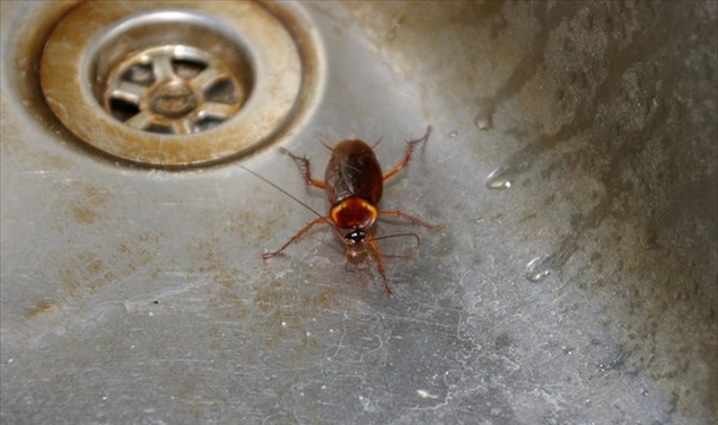
How long will they live without a head?
Now let's find out, true or fiction, the well-known fact that cockroaches can easily live without a head.
Due to the peculiarities of respiration (the insect breathes with tracheas, which are located throughout its body), the cockroach will not suffocate in the absence of a head. The digestive, nervous and circulatory systems also work almost autonomously from each other. If the cockroach's head is torn off, the cervical vessels will become clogged, the blood will coagulate very quickly, and the entire blood supply system will operate in the same mode. That is why the headless insect can live for almost 10 more days!
Nerve impulses will also pass through the body, so motor reflexes will not be turned off.

But there are a couple of buts. The cockroach's mouth is located on its head, so it will not be able to feed, under other favorable conditions the insect will soon die of hunger and dehydration. And without eyes, the cockroach will not see where to crawl, accordingly, it will be very problematic for him to hide from the enemy.
There is an opinion that this tenacious insect is able to survive even the apocalypse. Well, perhaps, if only permafrost does not become a "satellite" of the end of the world.
Perhaps humanity will someday be able to verify the veracity of this hypothesis.














The comment was sent successfully.